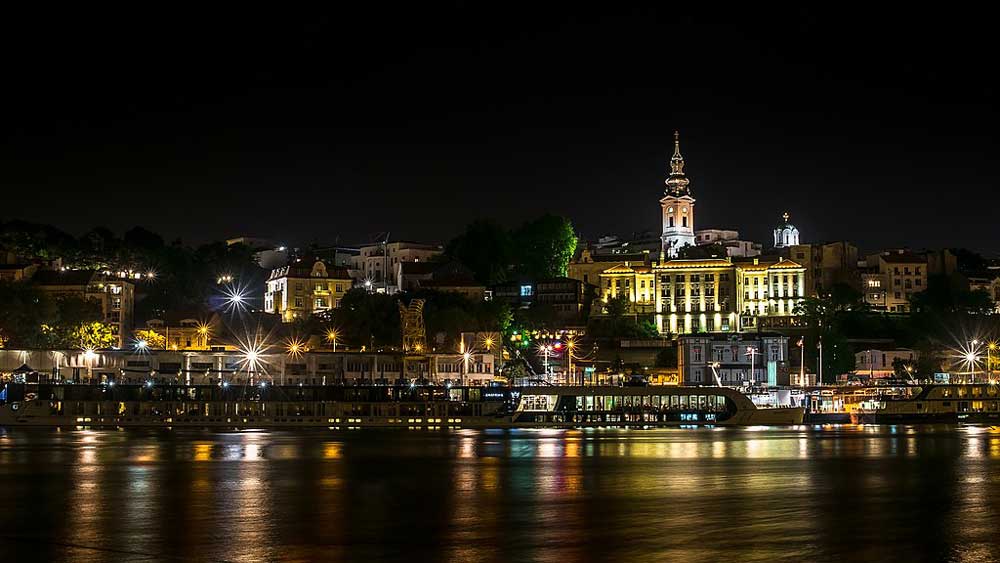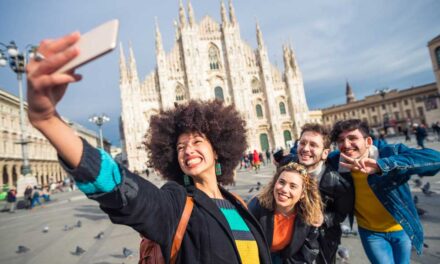Visit Belgrade: Where History Meets Heartbeat
Welcome to Belgrade – a city that doesn’t just stand on the banks of two mighty rivers, but dances to its own rhythm. Serbia’s vibrant capital is a unique blend of old-world charm and bold modern energy. From ancient fortresses and Ottoman relics to buzzing nightlife and street art, Belgrade wears its history like a badge and its future like a crown.
This is a place where cultures have collided and coexisted for centuries – Roman, Byzantine, Ottoman, Austro-Hungarian – all leaving their mark on the city’s soul. Stroll through Kalemegdan Fortress as the sun sets over the confluence of the Danube and Sava Rivers, or sip strong coffee in a smoky kafana (traditional tavern) where time seems to slow down.
But what truly sets Belgrade apart is its people. Warm, direct, and famously hospitable, Belgraders treat visitors like old friends. Their humor is sharp, their conversations passionate, and their love for life infectious. Whether you’re dancing until sunrise in a floating river club or sharing homemade rakija with locals, you’ll quickly feel like you belong. Tradition still pulses through Belgrade’s veins. Orthodox churches, folk music, family feasts, and age-old customs are very much alive, and proudly passed from generation to generation. Yet at the same time, Belgrade is forward-looking – a hub for artists, creatives, and tech innovators shaping a new narrative.
So come as you are. Whether you’re here for the history, the food, the fun, or just to feel something real – Belgrade is ready to welcome you.
When is the Best time To Visit Belgrade?
Summer (Jun–Aug): Lively and hot – perfect for river fun, nightlife, and open-air festivals. Expect buzzing energy and late sunsets.
Autumn (Sep–Nov): Mild temperatures, golden parks, and fewer tourists. A cozy time to explore cafés and culture.
Winter (Dec–Feb): Cold but charming – great for festive vibes, hearty Serbian food, and indoor attractions. Snow adds a fairytale touch.
Spring (Mar–May): Belgrade in bloom! Ideal for strolling, sightseeing, and soaking up the city’s fresh, vibrant spirit.
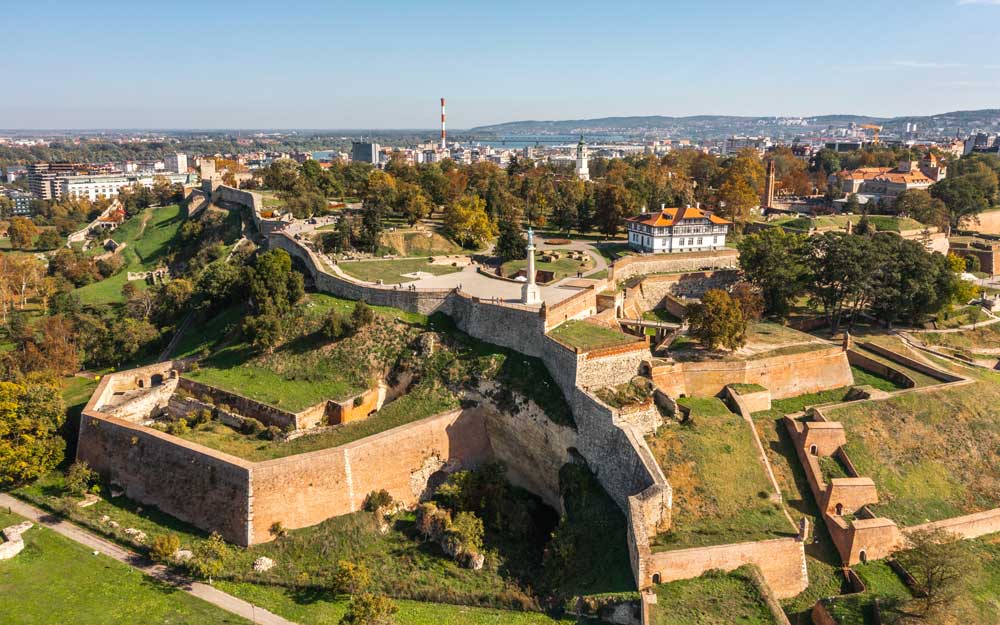
Visit Belgrade in Summer
(June to August) – Best for River Fun, Festivals, and Nightlife
Average temperatures:
Daytime: 25–35°C (77–95°F)
Evenings: 18–25°C (64–77°F)
Weather: Hot, sunny, with occasional thunderstorms – bring sunscreen and maybe an umbrella.
Summer in Belgrade is when the city is at full throttle. Rivers become playgrounds, and the nights are long, loud, and full of music. The famous splavs (floating clubs) on the Danube and Sava pump out everything from electronic to turbo-folk until the early hours. It’s a party city, and summer is the peak season.
- Couples can enjoy evening strolls along the riverbanks, candlelit dinners in hidden courtyards, or romantic sunsets from Kalemegdan Fortress.
- Families will love the parks, the Ada Ciganlija lake (aka “Belgrade Sea”) for swimming and biking, and plenty of open-air fun for the kids.
- Solo travelers can dive into Belgrade’s buzzing social scene, hit the bars, or join city tours to explore history by day and dance by night.
Visit Belgrade in Autumn
(September to November) – Best for Relaxed Exploring and Cultural Vibes
Average temperatures:
September: 20–28°C (68–82°F)
October–November: 10–20°C (50–68°F)
Weather: Mild, crisp air with golden leaves – a cozy, photogenic time to visit.
Autumn is when Belgrade slows down just enough to catch its breath. The crowds thin out, the heat eases, and the city’s charm is on full display. Trees turn gold and orange, cafés spill out onto cobbled streets, and the smell of roasted chestnuts fills the air.
- Couples will love the romantic, cozy vibe – perfect for wine bars, art galleries, and lazy brunches in Vračar or Dorćol.
- Families can explore without the heat or chaos – visit museums, take a tram ride through town, or enjoy some chill time in Topčider Park.
- Solo travelers will appreciate the calm energy, ideal for writing, people-watching, or just soaking up the local culture at your own pace.
Visit Belgrade in Winter
(December to February) – Best for Holiday Lights, Comfort Food, and Rakija
Average temperatures:
Daytime: 0–8°C (32–46°F)
Evenings: -5–2°C (23–36°F)
Weather: Cold and crisp, sometimes snowy – bring a coat and an appetite.
Belgrade in winter is like stepping into a Balkan snow globe. The streets sparkle with festive lights, Christmas markets pop up, and everyone seems to be warming their hands (and souls) with cups of hot rakija. It’s not tourist-heavy, which makes it great for experiencing the city like a local.
- Couples can bundle up for wintery walks, sip mulled wine by the fire, and share massive portions of traditional Serbian food.
- Families can visit museums, enjoy indoor play areas, or take kids to see snow (and throw it) at Avala Mountain just outside the city.
- Solo travelers can cozy up in historic kafanas, chat with friendly locals, and enjoy the low-season vibe – it’s all about warmth and connection here.
Visit Belgrade in Spring
(March to May) – Best for Blooming Parks, Mild Weather, and Laid-back Exploring
Average temperatures:
March: 10–15°C (50–59°F)
April–May: 15–25°C (59–77°F)
Weather: Fresh and pleasant – flowers blooming, birds chirping, sun peeking out more and more.
Spring is when Belgrade wakes up and stretches its legs. Parks and streets bloom with life, locals reappear at outdoor cafés, and the city feels renewed. It’s a great time to walk, eat, and explore without the summer crowds or winter chill.
- Couples can picnic in Kalemegdan, enjoy riverside bike rides, or discover Belgrade’s street art scene hand-in-hand.
- Families will love the family-friendly weather – not too hot, not too cold – and plenty of green spaces like Košutnjak and Zemun Quay.
- Solo travelers can enjoy peaceful mornings, open museums, and that perfect balance between lively and laid-back. Spring in Belgrade feels like a deep breath.

Must-See Sights & Monuments in Belgrade
- Kalemegdan Fortress & Park – A historic citadel with epic views of the Danube and Sava rivers, plus Roman, Ottoman, and Austrian layers of history.
- Saint Sava Temple – One of the largest Orthodox churches in the world; stunning inside and out, especially when lit at night.
- Republic Square – The beating heart of the city, surrounded by iconic buildings like the National Museum and National Theatre.
- Skadarlija – Belgrade’s bohemian quarter, full of charm, cobblestone streets, and vintage vibes.
- The Church of Saint Mark – A beautiful Serbian-Byzantine-style church tucked in the green of Tašmajdan Park.
- Avala Tower – A short trip outside the city, this tower offers panoramic views and a cool glass-floor observation deck.
Top Museums to Explore in Belgrade
- Museum of Yugoslavia & Tito’s Mausoleum (House of Flowers) – Dive into the complex and fascinating history of Yugoslavia and its iconic leader.
- Nikola Tesla Museum – Hands-on exhibits celebrating Serbia’s most famous inventor. Yes, there are electric sparks.
- National Museum – Serbia’s biggest museum with everything from prehistoric artifacts to modern art.
- Military Museum (in Kalemegdan) – Tanks, swords, and some serious history buffs will love this one.
- Museum of Contemporary Art – Striking modern building with an equally striking collection inside.
Local Cuisine to Try in Belgrade
- Ćevapi – Grilled minced meat sausages, usually served with flatbread, onions, and kajmak (a creamy dairy spread).
- Pljeskavica – The Balkan burger. Big, juicy, and often stuffed with cheese or bacon.
- Sarma – Cabbage rolls stuffed with minced meat and rice, slowly cooked to perfection.
- Ajvar – A roasted red pepper spread, often homemade and addictively delicious.
- Karadjordjeva Šnicla – A stuffed, breaded pork or veal schnitzel – the Serbian version of cordon bleu.
- Rakija – Serbia’s strong fruit brandy. Be warned: it’s a social drink and rarely stops at one shot.
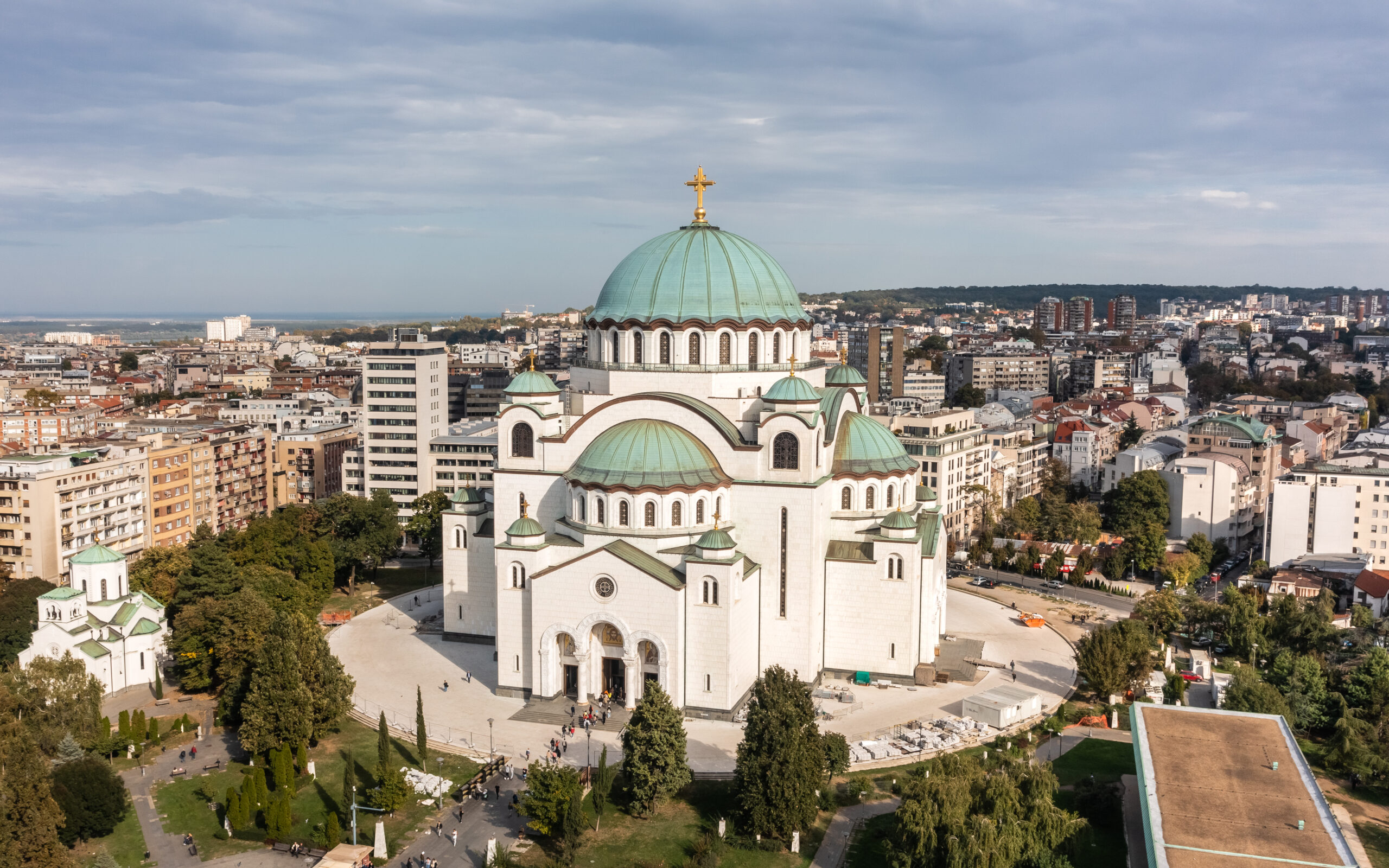
Best Places for Nightlife in Belgrade
- Splavs (Floating Clubs) – Along the Sava and Danube rivers. Music, drinks, dancing – and each one has its own vibe (from techno to turbo-folk).
- Cetinjska Street – Former brewery turned hipster central, full of bars, live music, and indie charm.
- Silosi (The Silos) – Urban industrial party spot on the Danube, great for electronic music.
- Skadarlija – For traditional Serbian music, candlelit dinners, and bohemian charm.
- Bitef Art Café – For live jazz, soul, and funk in a more laid-back setting.
Where to Go for Families
- Belgrade Zoo – Right next to Kalemegdan, small but fun, with lots of animals to entertain the little ones.
- Ada Ciganlija – “The Belgrade Sea” – great for swimming, biking, and kid-friendly water parks.
- Topčider Park – Historic, spacious, and full of green. Ideal for picnics and a quiet family day out.
- Museum of Illusions – Mind-bending fun for kids and adults alike.
- Children’s Theatre “Boško Buha” – Cute shows and performances aimed at the younger crowd (check schedule for English-friendly shows).
Where to Go for Solo Travelers in Belgrade
- Dorćol neighborhood – Perfect for slow wanders, cool cafés, vintage shops, and meeting locals.
- Walking Tours – Free walking tours run daily and are a great way to meet other travelers and get a crash course in Belgrade’s history.
- Zemun – A quaint riverside neighborhood that feels like a small town within the city. Solo-friendly and peaceful.
- Coffee culture – Belgrade’s café scene is social and welcoming. Strike up a convo or just people-watch like a pro.
- Kafanas – Traditional taverns with hearty meals and spontaneous music. Great for chatting with locals and learning a few Serbian words.
Sports & Stadium Vibes: Belgrade for the Competitive at Heart
Belgrade is a sports-loving city with a passion that runs deep – from street courts to sold-out arenas. Whether you’re a basketball junkie, a football fanatic, or just love soaking up electric atmospheres, the Serbian capital delivers all year round.
Basketball: The Eternal Derby & EuroLeague Madness
Basketball in Serbia isn’t just a sport – it’s a religion. And the rivalry between Crvena Zvezda (Red Star) and Partizan Belgrade is sacred. Known as the Eternal Derby, these two EuroLeague giants clash multiple times a season in games that are loud, intense, and absolutely unmissable.
- Where? Mostly at Štark Arena and Aleksandar Nikolić Hall (aka “Pionir”)
- When? Throughout the EuroLeague season (October–May)
- Why go? Expect sold-out crowds, wild chants, and some of the best basketball in Europe. Even if you’re not a hoops fan, the energy is next-level.
Pro tip: If you can’t get derby tickets, a regular EuroLeague or ABA League game still delivers top-tier action and a very vocal crowd.
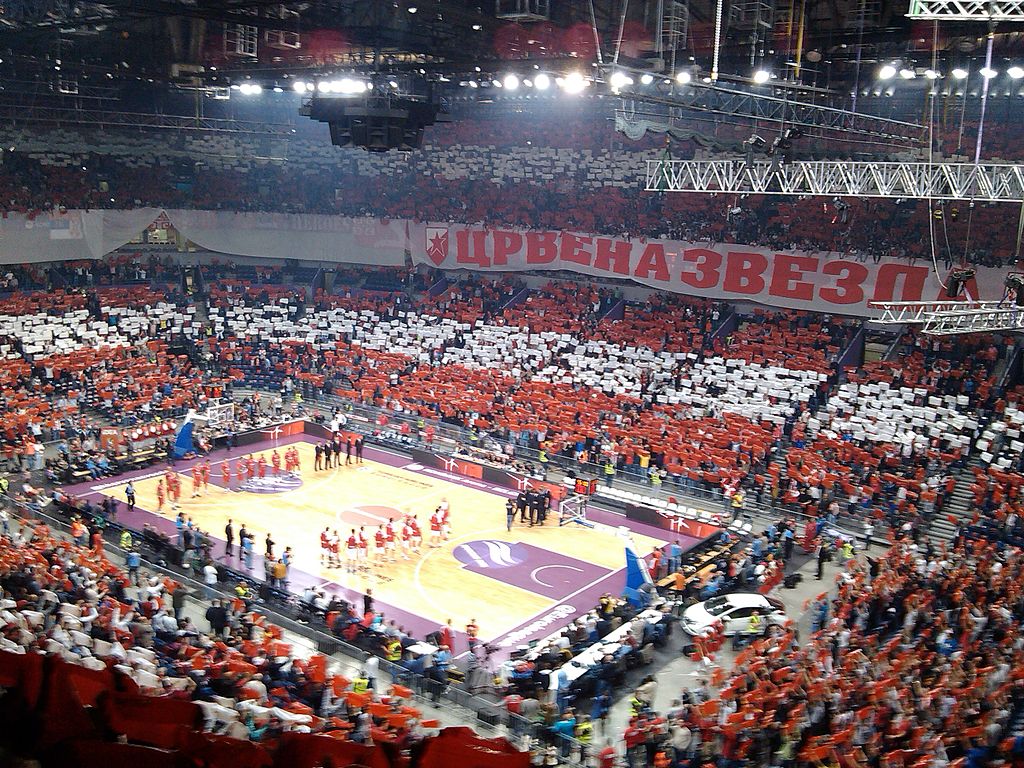
Football: Passion, Pyro, and Pure Chaos
Football in Belgrade is dramatic in all the right ways. Crvena Zvezda and Partizan also dominate the football scene, and their derby (also called the “Eternal Derby”) is one of the most intense in the world.
- Where?
- Rajko Mitić Stadium (Marakana) – Home of Crvena Zvezda
- Partizan Stadium – Home of Partizan Belgrade
- When? Serbian SuperLiga season (August–May), with derbies usually twice a year
Warning: The football derby isn’t for the faint-hearted – expect flares, chants, giant banners, and a crowd so loud it shakes your soul. For calmer football fun, catch a mid-season match with less pyro and more pitch.
Tennis: Belgrade Open & Djoković Vibes
Serbia’s golden boy, Novak Djoković, put Serbian tennis on the global map, and Belgrade proudly hosts ATP tournaments that attract major talent.
- Belgrade Open (ATP 250) – Hosted in May (check annual schedule)
- Where? Novak Tennis Center, right by the Danube
- Vibe? Chill, stylish, and great for spotting rising tennis stars
Marathons, Swims & Outdoor Events
If you prefer your sports from the sidelines of a scenic course, Belgrade also hosts:
- Belgrade Marathon (April) – One of the biggest in the Balkans
- Belgrade Half-Marathon (October) – Slightly smaller but just as scenic
- Ada Ciganlija Sports Scene – In summer, you’ll find open-water swims, triathlons, and even night swimming events
Ideal for fitness travelers, casual runners, or those who just want to cheer from a café.
Other Sports to Catch
- Handball and Volleyball – Popular in winter months, especially during European Championship qualifiers
- Water Polo – Serbia is a powerhouse; check out matches at the Tasmajdan pool
- eSports – Gaining momentum, with gaming lounges and events popping up across the city
Why Sports in Belgrade Hit Different
Whether it’s the deafening roar of 20,000 basketball fans or the theatrical madness of a football derby, Belgrade sports culture is pure emotion. You don’t even have to understand the rules – just grab a beer, join the chants, and enjoy the show
Is Belgrade Worth Visiting?
Belgrade isn’t your typical European capital – and that’s exactly the point. It’s bold, raw, soulful, and impossible to forget. From ancient fortresses to buzzing splavs, smoky kafanas to sleek cocktail bars, Belgrade is a city of contrasts that somehow fits together perfectly.
Whether you’re wandering its historic streets, clinking glasses of rakija with new friends, diving into a turbo-charged basketball derby, or just sipping coffee on a sunny terrace – Belgrade grabs you with its spirit and doesn’t let go.
It’s a place for curious travelers, culture seekers, food lovers, and party people alike. The kind of city where history lives in the walls, but the future is being written in cafés, galleries, and underground clubs right now.
So come hungry. Come open-minded. Come ready for adventure.
Belgrade doesn’t just welcome you – it pulls you in.
